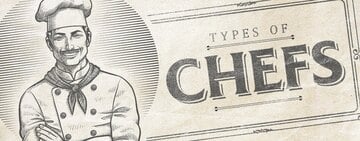Whether you’re building your prep station from scratch or fine-tuning an already efficient setup, the right tools define the rhythm and precision of your kitchen. Every professional knows that efficiency isn’t just about speed - it’s about consistency, accuracy, and control. And in a professional kitchen, hand tools are the quiet backbone of that operation. From the first julienne to the final garnish, every motion counts. Below, we’ll break down the top 10 tools that belong in every chef’s station and why each one earns its space on the line.
Shop All Kitchen Hand Tools1. Chef Knife
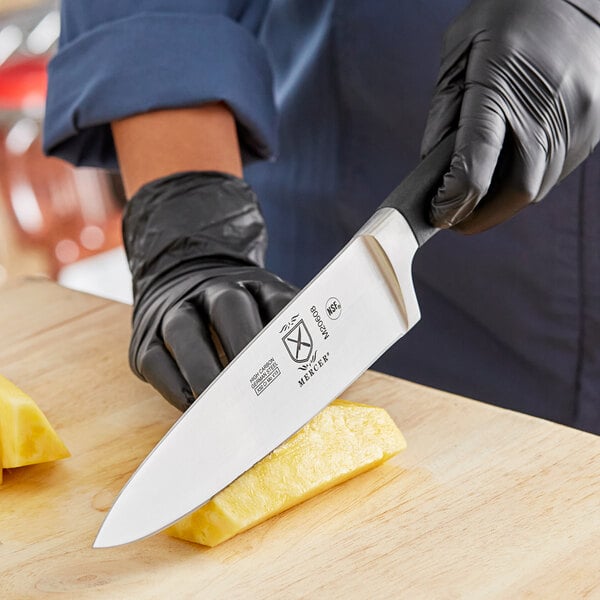
The chef's knife is the cornerstone of every professional kitchen and is the most personal and frequently used tool. Designed for versatility, it tackles everything from mincing herbs and slicing proteins to dicing vegetables. The right chef knife should feel like an extension of the hand, offering a perfect combination of power, control, and comfort.
When choosing your knife, pay close attention to construction, weight, and handle ergonomics. High-carbon German stainless steel offers durability and edge retention, while lighter Japanese blades favor precision and finesse. Length is another key factor - 8 to 10 inches is the professional standard, but balance and personal feel ultimately determine the right fit.
"When it comes to chef knives, remember that a sharp middle-of-the-road knife is miles better than a dull high-end knife. Make sure you budget for a steel and a sharpening stone when picking a knife."
- Steve Ziegler, WebstaurantStore Industry Expert
2. Y Peeler
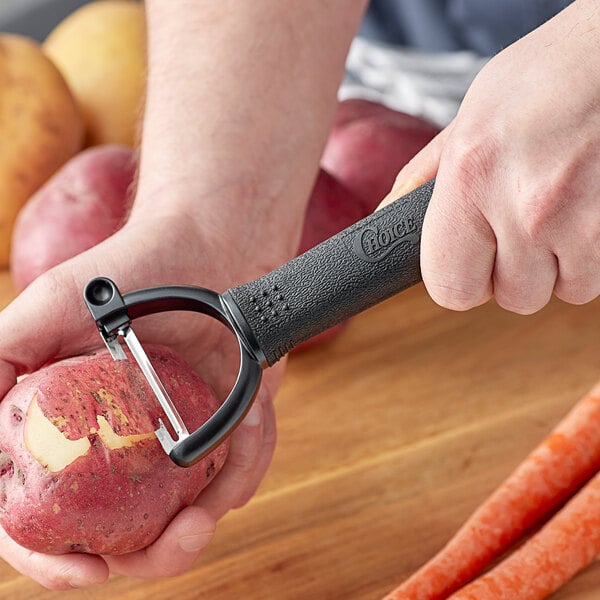
A Y peeler might look simple, but it’s one of the most efficient instruments in any mise en place. Its horizontal design allows for smooth, controlled peeling with minimal wrist strain, perfect for high-volume prep. Beyond potatoes and carrots, it’s invaluable for creating thin ribbons of vegetables, shaving cheese, or crafting garnishes with clean, consistent cuts.
When selecting a Y peeler, look for a high-carbon or stainless steel blade that holds its edge and a handle that offers a solid grip even under wet conditions. Some models feature swiveling blades for delicate produce, while others are fixed for durability under pressure.
3. Turner
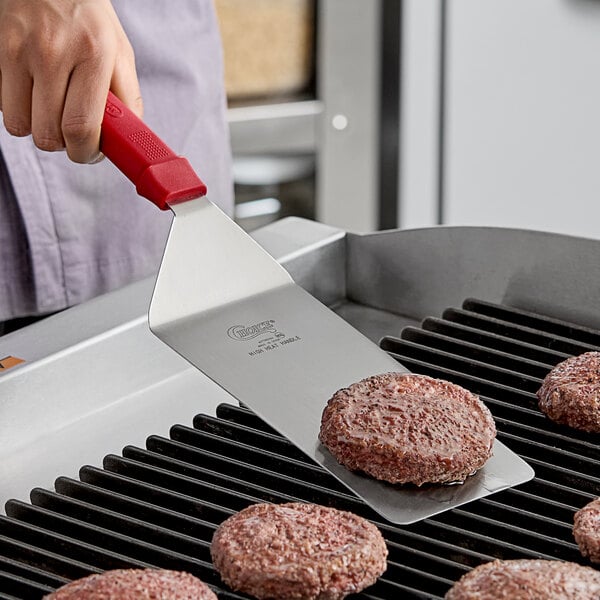
An unsung hero for precise plating and efficient flipping, every chef’s line station needs a dependable turner. Whether you’re searing fish, transferring delicate proteins, or working the flat top, a good turner offers strength, flexibility, and balance. Its thin, beveled edge allows you to slide under food cleanly without tearing the surface or disrupting presentation.
Choose a turner with a wide stainless steel blade for stability and prioritize a comfortable, heat-resistant handle for those long hours on the line. Offset designs provide added leverage and clearance for precise plating or turning, while straight models deliver the power needed for heavier proteins or griddle work. Some turners feature slotted blades to drain excess oil or sauce, or flexible edges that adapt to curved pans and tight spaces.
4. Whisk

From emulsifying vinaigrettes to aerating batters, the whisk is the chef’s instrument of texture and integration. It’s not just about mixing, it’s about achieving the perfect balance of air, density, and smoothness. A strong whisk transforms simple ingredients into emulsions, foams, and batters with uniform structure.
There are a variety of whisk types designed for different recipes and cooking techniques. Piano whisks are ideal for whipping and aeration, while French whisks offer tighter wires for dense mixtures and sauces. Stainless steel is the standard for durability and easy sanitation. Consider options with non-slip handles for added comfort, or purchase multiple lengths to suit different prep tasks.
5. Ladle
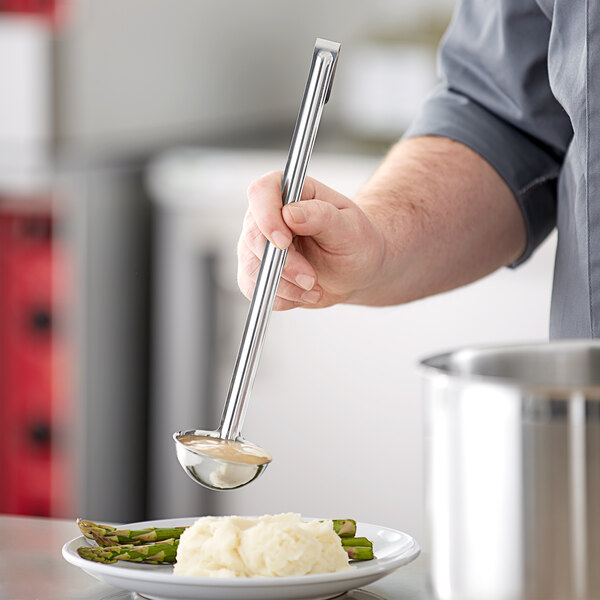
More than a serving tool, the ladle is a precision instrument for portioning sauces, soups, and stocks. In professional kitchens, consistency is everything, and the ladle ensures accurate volume control whether plating a demi-glace or filling consomme bowls during service. The right ladle not only speeds up plating but also guarantees uniformity across every dish that leaves the pass.
Opt for stainless steel with a balanced handle and deep, seamless bowl. Volume markings are helpful for batch consistency, while a hooked handle prevents slipping into hot pots. Keep multiple sizes on hand for different applications, from 1 oz. for sauces to 8 oz. for soups.
6. Tongs

Acting as an extension of the hand, every chef needs a set of tongs within reach. They provide an efficient way to cook and serve, allowing staff to handle hot foods safely and manage items that are difficult to lift or turn with standard utensils. They’re ideal for turning proteins, plating components, and maintaining precision under pressure. A good pair of tongs delivers control without over-gripping, allowing you to handle delicate items with finesse and hot food with confidence.
Stainless steel utility tongs are a great all-purpose tool for foodservice operations. Choose a length that suits your station: 9” for line work or 12” for grill and saute stations.
"In the heat of service, my favorite tool is my tongs. They act as a hot holder, plating utensil, and just an overall extension of my hands. But my favorite part is during the little bit of downtime, just before or after dinner rush, they are the best fidget toy. Clack! Clack! Spin! Spin!"
- Larry Williams, WebstaurantStore Chef
7. Kitchen Shears
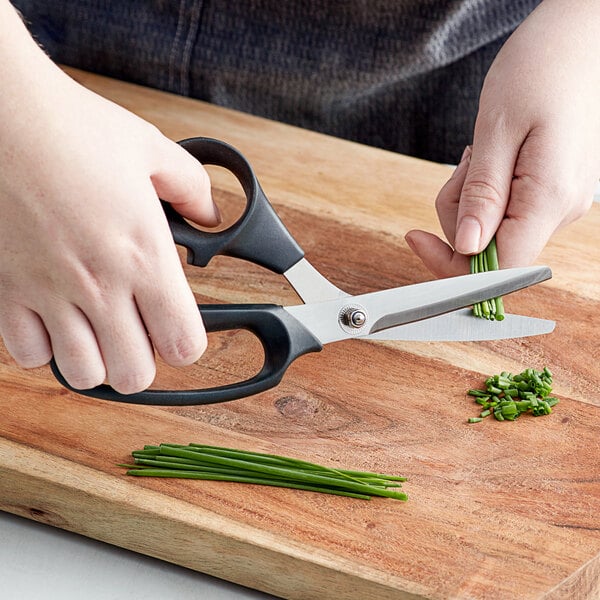
In a professional kitchen, a pair of high-quality kitchen shears is indispensable for both prep and service. Far more than simple kitchen scissors, they’re precision tools that streamline tasks like breaking down poultry, trimming herbs, snipping twine, or portioning garnishes. Their leverage and control make them ideal for quick, accurate cuts where a knife might be cumbersome or unsafe.
When selecting kitchen shears, invest in quality stainless steel blades for grip and longevity. Detachable blades are a must for thorough cleaning and sanitation, especially in high-volume environments. Some chefs prefer multipurpose shears with integrated bottle openers or nutcrackers, but the focus should always be on balance, comfort, and clean, reliable performance. A dependable pair of shears can easily become one of the most versatile tools in your kit.
8. Kitchen Scale

From portion control to baking ratios, the kitchen scale ensures recipes are executed exactly as intended. Measuring by weight eliminates guesswork, streamlines prep, and minimizes waste. Beyond recipe accuracy, precise measurement also supports better inventory management, helping kitchens maintain consistency and control costs.
Digital scales are preferred for their speed, precision, and reliability in fast-paced kitchen environments. Modern models offer advanced features beyond simple weight measurement, from tare functions that allow easy zeroing between ingredients to auto-calibration for consistent accuracy. Fine measurement increments (ideally down to 0.1 gram sensitivity) ensure precise control for delicate tasks such as weighing spices, leavening agents, or pastry components. Some professional-grade scales also include dual-unit conversion or connectivity options that integrate with recipe management software for added convenience.
9. Instant-Read Thermometer
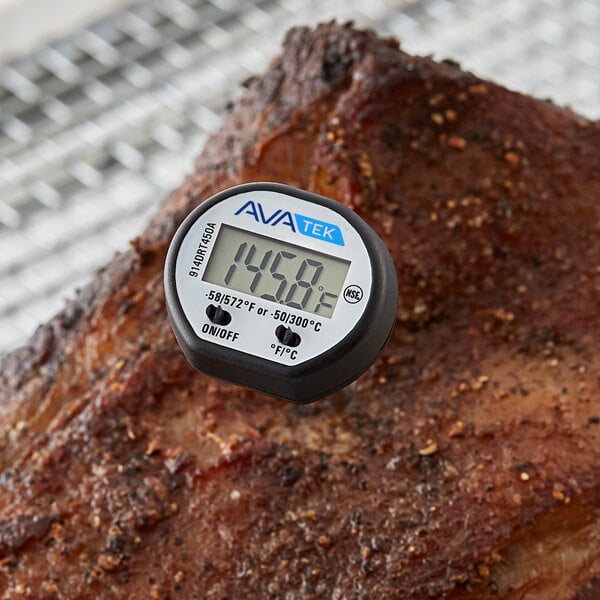
An instant-read thermometer eliminates guesswork and ensures consistency across every dish, whether confirming that proteins have reached safe internal temperatures or monitoring the delicate stages of sugar syrups, custards, and emulsions. From sous-vide applications to flash-seared steaks, precise temperature readings preserve flavor, texture, and food integrity. A reliable kitchen thermometer is a non-negotiable tool, vital not only for maintaining culinary excellence but also for meeting HACCP and local food safety compliance requirements.
A fast, waterproof model withstands the rigors of daily service, from grill stations to pastry prep. Opt for a fine probe tip for accurate readings on thin cuts or delicate products, and ensure a response time to keep workflow efficient during high-volume service. Calibration capability helps maintain long-term accuracy, ensuring dependable results shift after shift.
"If you choose a digital thermometer, spend a few extra bucks on one that is listed as waterproof. They always seem to last much longer than the cheaper digital thermometers, whether or not they ever get wet."
- Steve Ziegler, WebstaurantStore Industry Expert
10. Plating Tweezers
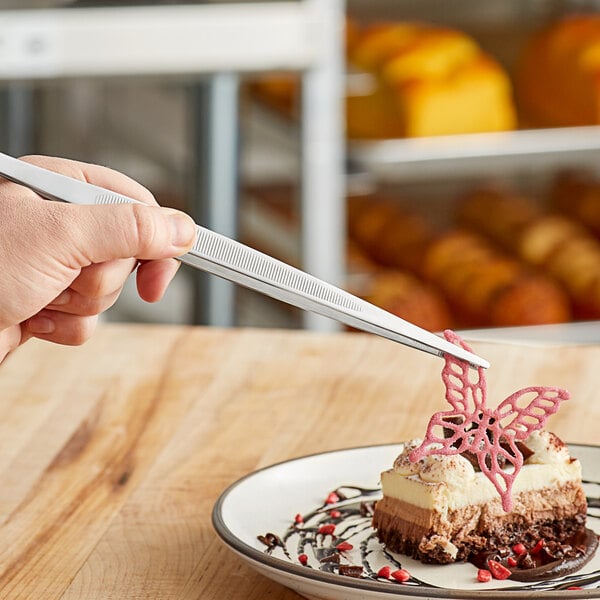
Intentional plating defines professional presentation, and plating tweezers are the modern chef’s tool for control and artistry. They allow for detailed placement of microgreens, edible flowers, caviar, and garnishes, ensuring every plate looks intentional and balanced. Beyond aesthetics, tweezers enhance efficiency during service, reducing handling time and preserving the integrity of delicate ingredients.
Tweezers come in multiple lengths and tip styles. Offset tweezers give leverage for intricate angles, while straight ones allow for fine detail work. Stainless steel construction is standard, with textured grips for stability. In the world of elevated dining, plating tweezers transform ordinary meals into culinary works of art, turning each plate into a carefully crafted gastronomic experience.
Back to TopThe beauty of being a good chef is that you don’t need the latest gadgets or the most expensive equipment to create great food. Still, having a small arsenal of reliable prep tools can make every task smoother and more efficient. Whether you’re expanding your own collection or searching for the perfect gift for a chef who values precision, these 10 tools form the backbone of a professional kitchen. Invest in quality pieces and maintain them with care - they’ll withstand the rigorous demands of the kitchen and serve you well for years to come.


